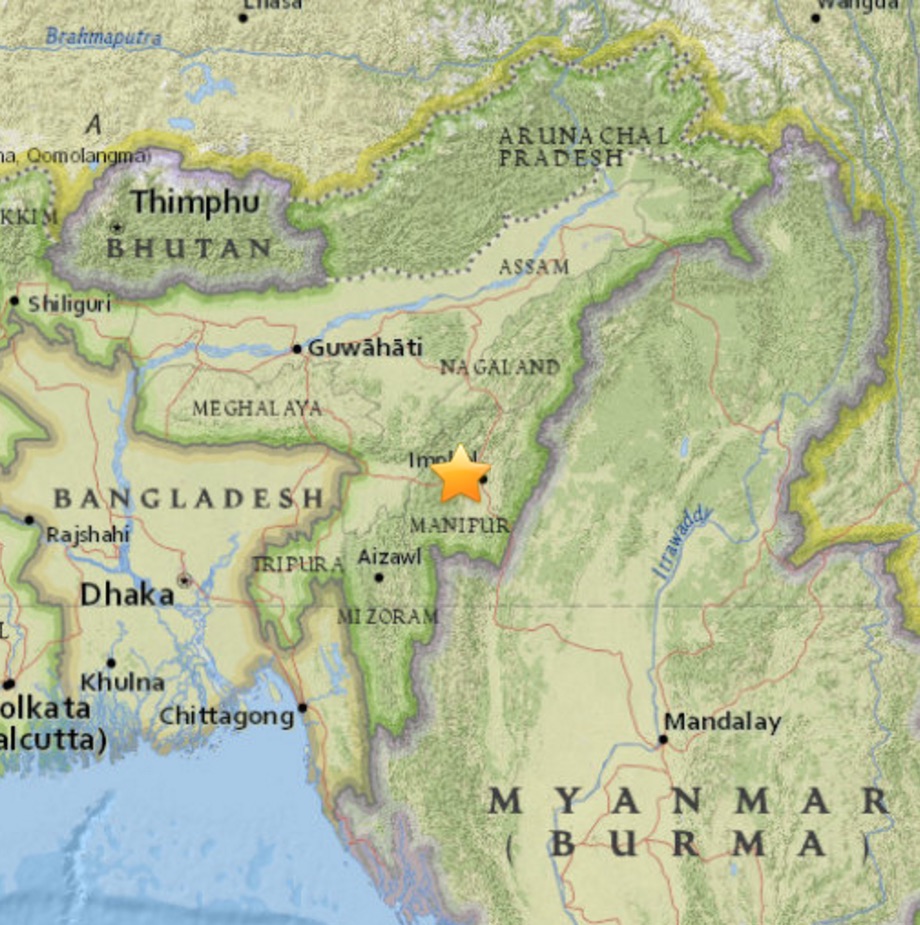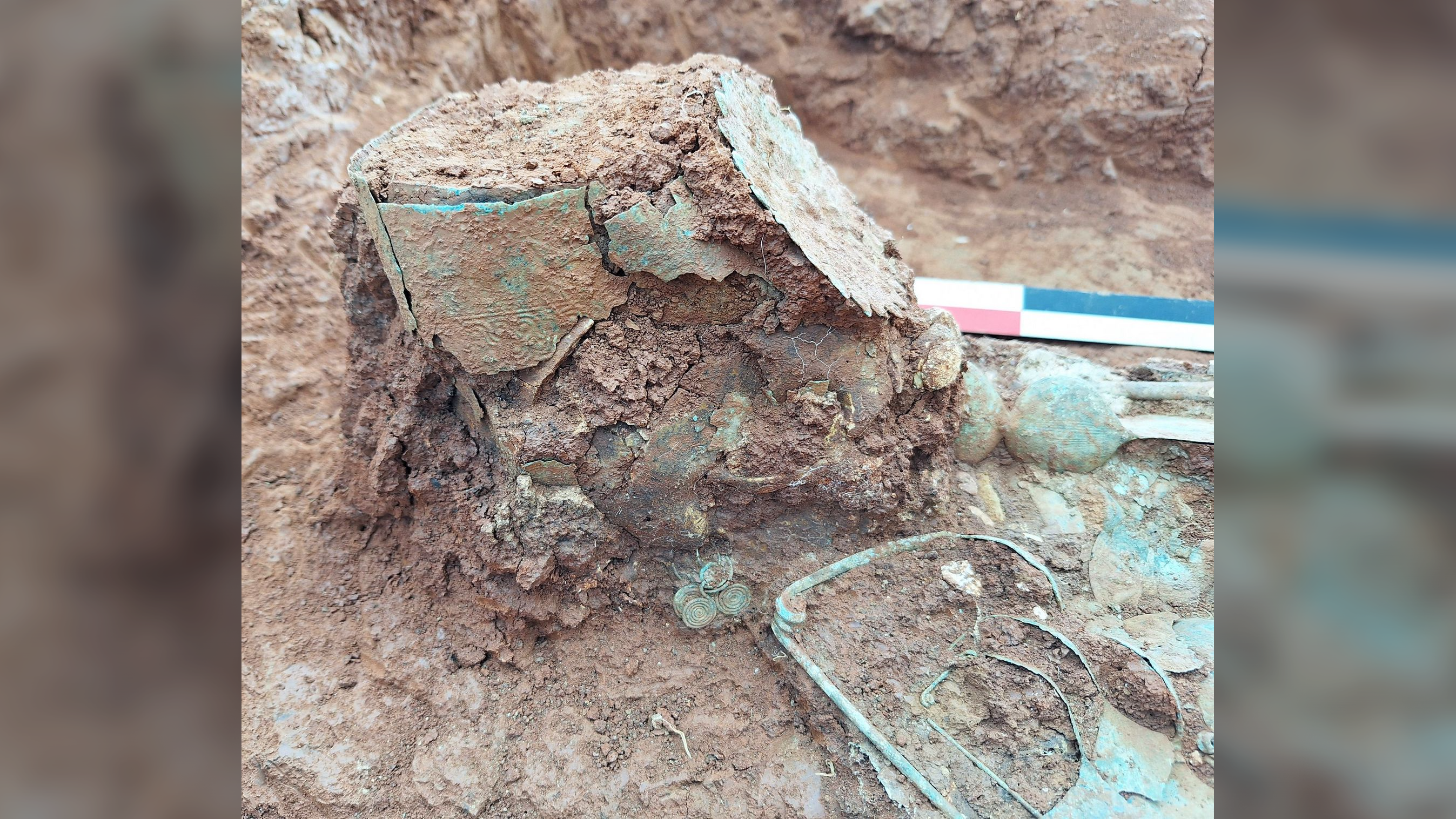Local Geology Makes Sunday's Earthquake in India Complex

A magnitude-6.7 earthquake shook Manipur state in India Sunday (Jan. 3), collapsing buildings and causing at least 10 deaths, according to news reports.
The quake hit at 4:35 a.m. local time, 18 miles (29 kilometers) from the city of Imphal, in an area where large temblors are common. These quakes occur because of the collision of the India and Eurasia tectonic plates, which are converging at a rate of about 2 inches (5 centimeters) per year, according to the U.S. Geological Survey (USGS). The geology of the area is particularly complex, said Harley Benz, the scientist-in-charge at the USGS National Earthquake Information Center in Golden, Colorado.
"This is not the case of something like the San Andreas, where you have a well-defined fault and it's shallow and it has a relatively small width to it," Benz told Live Science. "This is in the mantle, where you have a broad area of deformation." [Photo Journal: The Gorgeous San Andreas Fault]
Active area
The towering peaks of the Himalayas and the Hindu Kush, among other mountains, testify to the tectonic forces underlying the meeting point of the India and Eurasian plates. This is the 20th quake of magnitude-6 or greater to hit within 155 miles (250 kilometers) of the epicenter of Sunday's Manipur quake in the past century, according to the USGS.
"We know that this area is seismically active, and so having an earthquake of this size is not unusual," Benz said.
According to the agency, the Manipur quake originated on a strike-slip fault. These are faults that run vertically, with the blocks of crust on either side moving horizontally in relation to one another. (You can see an animation of a strike-slip fault on the USGS website.)
Get the world’s most fascinating discoveries delivered straight to your inbox.
The region where the quake struck is in a transitional zone, Benz said. To the south, near Sumatra and the Andaman Islands, the India plate is slipping under the Eurasian plate in a straightforward example of subduction. This results in some strike-slip quakes, but more thrust-fault temblors, which push old rock layers over new ones at a low angle.
North of the Manipur region, along the Himalayan front, the majority of earthquakes are likewise along shallow thrust faults, Benz said. One example is the magnitude-7.8 quake that hit Nepal in April 2015. That quake killed more than 9,000 people, destroyed historic buildings and moved Mount Everest an inch. In between those two regions sits the transitional zone where the latest quake hit and where the geology is quite complicated, Benz said.
Depth and damage
Deeper quakes like the Manipur temblor, which had a depth of about 34 miles (55 km), tend to cause less surface damage than those that originate higher up, in the crust, Benz said.
"Had it been a shallow earthquake, as close as it was to the town, it could have caused a lot more damage," he said. Imphal sits in a basin, however, which could have locally amplified the quake's waves, explaining some of the damage. Local officials told news agencies today (Jan. 4) that the quake had killed at least 10 people and injured more than 100.
"You end up getting a higher duration of ground shaking [locally], because the waves get in the basin and they tend to rattle around," Benz said.
Reports on the USGS website indicate that the Manipur quake was felt as far away as Kathmandu, which was affected by the much larger magnitude-7.8 quake last April. The USGS has not detected any significant aftershocks from the Manipur quake — a fact that could be attributed to the quake's depth, Benz said.
"Typically, when you go deeper into the mantle, the number of aftershocks you might have drops off significantly compared to [those seen with] crustal earthquakes," Benz said.
Follow Stephanie Pappas on Twitter and Google+. Follow us @livescience, Facebook & Google+. Original article on Live Science.

Stephanie Pappas is a contributing writer for Live Science, covering topics ranging from geoscience to archaeology to the human brain and behavior. She was previously a senior writer for Live Science but is now a freelancer based in Denver, Colorado, and regularly contributes to Scientific American and The Monitor, the monthly magazine of the American Psychological Association. Stephanie received a bachelor's degree in psychology from the University of South Carolina and a graduate certificate in science communication from the University of California, Santa Cruz.
